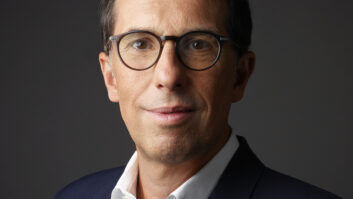How will the ever-changing landscape for communications and entertainment services among cable, satellite and telecommunications operators shake out in the next several years?
Five leading Wall Street analysts will join me to debate that situation during an International CES panel discussion called “Competition For Pay TV: Wall Street Report,” on Jan. 6 at 1:30-2:45 p.m. in room N258 of the Las Vegas Convention Center.
The team represents some of the best trend spotters in the cable, telco and satellite fields, and attendees should come away with a better understanding of how the marketplace may respond to some major pending developments, including:
- the delivery of new more robust pipelines that will allow new levels of voice, video and Internet communications services from leading telcos across the country;
- further improvement of VoIP systems, which are helping cable operators enter the telephony space while threatening revenue growth for telcos; and
- the launch of new satellites and the changeover to MPEG- 4 compression by DirecTV and EchoStar, bringing more services and capabilities to the satellite pay-TV arena.
One of the panelists, Vijay Jayant, managing director at Lehman Brothers’ New York headquarters, believes that at least on the equity side of the investment business, sentiment is trending negatively toward telecom sub-sectors, in part, because of the fear of new and disruptive technologies that displace and weaken already deteriorating industry economics.
Jayant said, “The concept of bundling is really just a euphemism for a price war. It’s a zero-sum game. They’re all chasing the same installed base [of subscribers].” Jayant advises spending money on industry-related vendors, especially those in VoIP, high-definition TV and digital video recorder (DVR) parts of the business.
Ray Katz, senior managing director and media equity research group head at New York-based Bear Stearns, will offer his expertise on the cable industry.
Katz sees money to be made on both the negative and positive sides of the current state of the communications services industry.
“In a fractionalized environment, brand will matter more and more. Those in this industry that invest more in their brands are the wise ones. The brand is a purchase filter for the consumer,” Katz adds.
He notes, though, that brand adherence can be both a good thing (toward usage) and bad (toward avoidance), and must therefore be carefully nurtured and grown.
As an important example, Katz points to many of the large traditional telecom companies and their efforts to move into and make best use of the Internet. Katz concludes, “Many of these companies may have missed the boat, but the good news is that there’s still some time for them.”
Steve Mather, Sanders Morris Harris equity research VP, sees the telephone companies, cable operators and satellite providers continuing to fight aggressively over the limited number of U.S. multichannel subscribers. As a result, margins for all three will go down, he said.
Mather is particularly pessimistic looking at the telcos’ chances, because they have so much to spend just to build out their fiber to the curb (or fiber to the node) infrastructures, and then to steal the subscriber from the cable or satellite guys requires a significant subscriber acquisition cost.
Both of these factors create a negative rate of return in the investment for years to come. In addition, the new telcos are competing against efficient and adept multichannel cable and satellite operators, which is a big change from the days when DBS satellite services first launched and cable operators were much less capable of responding.
Further, Mather notes that telcos are being managed by the same managers today who got them into the state they’re in. Plus, He believes that it will be extremely difficult to get the telcos collectively to the 20 million to 25 million subscribers required to break even.
Craig Moffett, U.S. cable and satellite broadcasting senior analyst at New York-based Bernstein & Co., is bullish about cable’s chances against the satellite and telephone companies.
“Right now, there’s a perfect storm of negative sentiment,” Moffett said. “The telcos are coming, their DSL pricing is going to hell, and there are tons of new broadband networks popping up — which means with companies like Skype and Vonage, voice may become a free service.”
Turning to cable, Moffett feels one of the reasons it thrives is that it has the only high-capacity two-way plant, which is pressing its advantage with the provisioning of incremental services at low costs.
Turning to bundling, Moffett likes the concept but believes that subscribers will not react to package offers unless they receive at least a 20 percent discount saving.
“With its low incremental costs, cable can offer bundles that are richer and richer, at prices that are more and more compelling,” Moffett said.
He also questions the spending of satellite operators on the delivery of HDTV services and, like Mather, the cost per subscriber for the telcos to buy subscribers away from every market’s version of the three existing cable or satellite operators.
In summary, the group is looking at a lot more change than ever before, which suggests many more challenges and many more opportunities to make — and lose — money in telecom.













